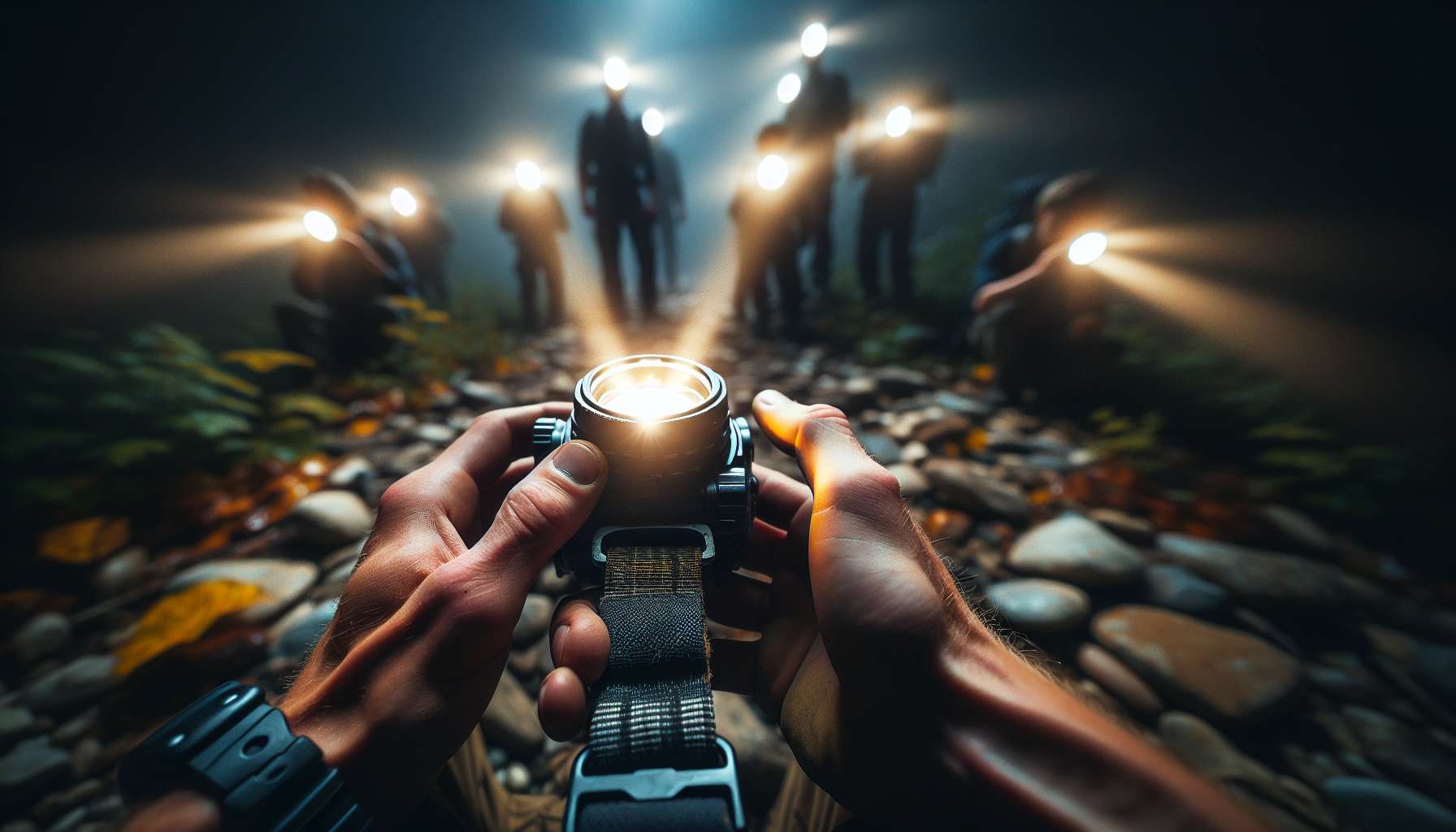The Comprehensive Guide to Headlamps
When it comes to outdoor activities, work in dimly lit spaces, or emergency situations, having a reliable source of light is essential. This is where headlamps come in a hands-free lighting solution that has revolutionized the way we illuminate our surroundings. In this comprehensive guide, we will delve into the world of headlamps, exploring their history, functionality, applications, and much more. Join us on this enlightening journey as we shine a light on everything you need to know about headlamps.
The Evolution of Headlamps
Headlamps have come a long way since their humble beginnings. The earliest versions of headlamps can be traced back to the 1890s when miners used open flames attached to their helmets for illumination. These primitive headlamps were not only inefficient but also posed a significant safety hazard due to the risk of fire.
It wasn’t until the 1920s that headlamps saw significant improvements with the introduction of electric bulbs. These early electric headlamps were bulky and cumbersome, limiting their portability and usability. However, they marked the beginning of a new era in headlamp technology, paving the way for the sleek and powerful headlamps we have today.
Over the years, advancements in LED technology have revolutionized the headlamp industry, making headlamps smaller, lighter, and more energy-efficient. Modern headlamps boast impressive features such as adjustable brightness levels, multiple lighting modes, and long battery life, making them a versatile lighting solution for a wide range of activities.
The Anatomy of a Headlamp
Before we delve deeper into the world of headlamps, let’s take a closer look at their basic components. A typical headlamp consists of three main parts: the light source, the power source, and the headband.
The light source is the heart of the headlamp, providing the illumination needed for various tasks. LED bulbs are the most common light source used in modern headlamps due to their energy efficiency, durability, and brightness. Some high-end headlamps may also feature multiple LEDs or even a combination of LED and incandescent bulbs for enhanced performance.
The power source, usually a battery pack, provides the energy needed to power the headlamp. Rechargeable lithium-ion batteries are popular choices for headlamps as they offer a good balance between power output and weight. Disposable batteries such as AAA or CR123A are also commonly used in headlamps for their convenience and availability.
The headband is the part of the headlamp that secures it to the user’s head. Most headbands are adjustable to accommodate different head sizes and ensure a comfortable fit. Some headlamps may also feature additional padding or ventilation to enhance comfort during extended use.
Applications of Headlamps
Headlamps are incredibly versatile tools that find applications in various industries and activities. From outdoor adventures to professional work settings, headlamps offer a convenient and reliable source of light in a hands-free package.
One of the most popular uses of headlamps is in outdoor activities such as hiking, camping, and caving. Outdoor enthusiasts rely on headlamps to navigate dark trails, set up camp, and explore caverns with ease. The hands-free operation of headlamps allows users to keep their hands free for other tasks, making them an essential accessory for any outdoor adventure.
Headlamps also play a crucial role in emergency situations and search and rescue operations. Their compact size and powerful output make them ideal for illuminating dark areas during power outages, natural disasters, or nighttime emergencies. Rescue teams often use headlamps to search for survivors in hard-to-reach locations or provide light in low-visibility conditions.
In the workplace, headlamps are indispensable tools for professionals working in dimly lit environments such as construction sites, mines, and tunnels. Miners, electricians, and mechanics rely on headlamps to light up their workspaces and perform tasks with precision and safety. The hands-free design of headlamps allows workers to focus on their tasks without being hindered by a handheld light source.
Choosing the Right Headlamp
With a myriad of headlamp options available on the market, choosing the right headlamp can be a daunting task. Factors such as brightness, beam distance, battery life, and waterproofing should be considered when selecting a headlamp that suits your needs.
When it comes to brightness, the lumens rating of a headlamp indicates how bright the light output is. Higher lumens values translate to brighter light, which is ideal for activities that require long-distance visibility or increased illumination. However, keep in mind that higher brightness levels may drain the battery faster, so it’s essential to strike a balance between brightness and battery life.
Beam distance is another crucial factor to consider when choosing a headlamp. The beam distance refers to how far the light can reach before it diminishes to the equivalent of the moonlight. Headlamps with a longer beam distance are ideal for outdoor activities such as hiking or trail running, where long-distance visibility is essential.
Battery life is a critical consideration, especially for outdoor enthusiasts or professionals who rely on their headlamps for extended periods. Rechargeable headlamps offer the convenience of being able to recharge the battery, while disposable battery options provide the flexibility of replacing batteries on the go. Consider the runtime of the headlamp on different brightness settings to ensure it meets your needs.
Expert Opinions on Headlamps
To provide a well-rounded perspective on headlamps, let’s hear from experts in the field. Dr. Sarah Johnson, a lighting designer with over 10 years of experience, shares her insights on the evolution of headlamp technology:
“As a lighting designer, I’ve witnessed firsthand the incredible advancements in headlamp technology over the years. LED technology has revolutionized the industry, allowing for brighter, more energy-efficient headlamps that are suitable for a wide range of applications. The future of headlamp design looks promising, with the potential for even more compact and powerful solutions on the horizon.”
Dr. Johnson’s expertise highlights the importance of innovation and adaptability in the headlamp industry, paving the way for more efficient and user-friendly lighting solutions.
Common Misconceptions About Headlamps
Despite their widespread use, headlamps are not without their misconceptions. One common misconception is that headlamps are only useful for outdoor activities or emergencies. While headlamps are indeed popular in these scenarios, they also have practical applications in everyday tasks such as reading, walking the dog, or working on DIY projects.
Another misconception is that all headlamps are bulky and uncomfortable to wear. With advancements in design and materials, modern headlamps are lightweight, compact, and ergonomically designed for maximum comfort. Whether you’re hiking up a mountain or fixing a leaky faucet, a well-fitted headlamp can enhance your experience and make tasks easier to accomplish.
Comparative Analysis of Headlamp Brands
When it comes to choosing a headlamp, the brand can play a significant role in determining the quality and performance of the product. Let’s compare two popular headlamp brands Petzl and Black Diamond to see how they stack up against each other.
- Petzl: Known for its innovative designs and durable construction, Petzl headlamps are favored by outdoor enthusiasts and professionals alike. With a focus on user comfort and performance, Petzl headlamps offer a wide range of features such as adjustable brightness, red light modes, and ergonomic headbands.
- Black Diamond: Renowned for its high-quality lighting solutions, Black Diamond headlamps are a popular choice among climbers, hikers, and adventure seekers. Black Diamond headlamps are known for their powerful beams, long battery life, and rugged construction, making them ideal for demanding outdoor environments.
Both Petzl and Black Diamond offer a variety of headlamp models to suit different needs and preferences, so be sure to compare features, specifications, and customer reviews before making a purchase.
FAQs About Headlamps
1. What is the difference between spot and flood beams in headlamps?
Spot beams focus the light in a narrow, concentrated area, ideal for long-distance visibility or pinpointing objects. Flood beams, on the other hand, provide a wide, even light spread, perfect for illuminating a broad area or working up close.
2. Are rechargeable headlamps better than disposable battery headlamps?
Rechargeable headlamps offer the convenience of being able to recharge the battery, saving you money on disposable batteries in the long run. However, disposable battery headlamps are more convenient for situations where recharging may not be an option.
3. Can headlamps be used underwater?
While some headlamps are waterproof and can withstand immersion in water for short periods, not all headlamps are suitable for underwater use. Check the manufacturer’s specifications to ensure that your headlamp is rated for underwater use if needed.
To Wrap Things Up
Headlamps are versatile tools that have transformed the way we illuminate our surroundings. From outdoor adventures to professional work settings, headlamps offer a hands-free lighting solution that is convenient, reliable, and efficient. By understanding the evolution, anatomy, applications, and selection criteria of headlamps, you can make an informed choice when choosing the right headlamp for your needs. Whether you’re exploring the great outdoors or working in low-light conditions, a quality headlamp can light the way to a brighter future.




